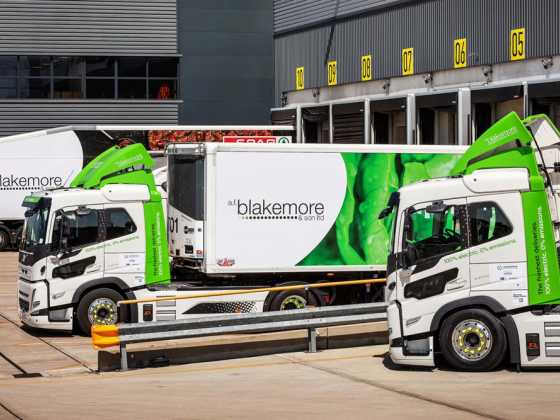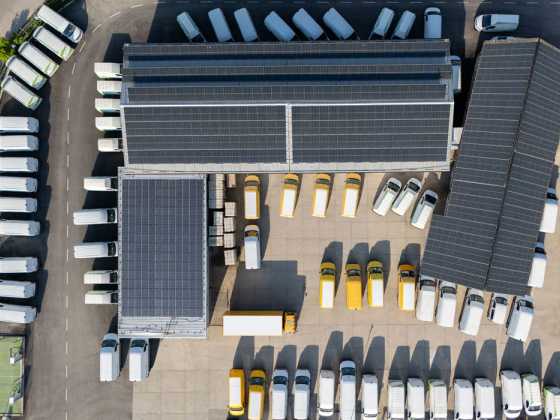Prepping first time EV drivers

Organisations that have introduced electric vehicles into their fleet should ensure drivers are briefed on their unique operating requirements to maximise safety and efficiency, and to ensure drivers have a confident and positive experience.
Nowadays, driving an electric vehicle is not that different from running a traditional petrol or diesel vehicle. But there are certain things to know to get the most out of an electric vehicle and to ensure a positive experience.
Get to know the vehicle
Before the keys get handed over to a new EV driver, they should be talked through the vehicle’s technology and charging procedure. This should include how to access the charging port, where the cable is located, how to find out current battery status, and how to search for a charging station.
Charging
Before an organisation adopts electric vehicles for their drivers, they need to assess how they will be charged. If a home charger could be installed, then this option should be talked through with the employee, ensuring they know what the installation work involves and also how charging will be reimbursed.
If the driver will have to use the public charging network, then it’s worth explaining through the various types and speeds of charging available.
Ultra-Rapid chargers have speeds of 150kWh – 400kWh and can be found on motorway services or near major routes. They can charge an electric car to 80 per cent in 10 minutes to one hour, however, there is a cost premium for such a quick turnaround.
Rapid charging has speeds of 50kWh – 100kWh and can typically charge an EV to 80 per cent in 20 minutes to an hour.
Fast charging has speeds of between 7kWh – 25kWh and charge times are more like two to six hours. These types of chargers are best used as destination charging, where the vehicle can be left for a number of hours.
It’s also worth discussing payments for public charging, highlighting that while many charge points accept contactless payments, others may require you to register first. And make sure you explain how business mileage will be paid for or reimbursed.
An EV orientation session should also include how to find public charging. Most EVs will have inbuilt sat navs or technology that will allow you to search for charging. There are apps too, such as Zap Map, which will tell you the location, speed, charge type, and the status of a chargepoint – such as if they are in use or broken.
A change of mindset
Driving an electric vehicle requires a change of mindset from driving a petrol or diesel vehicle. You have to consider if the vehicle has enough battery charge to get to the destination and back again, or if you will need a charge on route.
If you do need to charge, then some research should then be done on the availability of chargers in the area.
There are around 64,000 public charging devices available in the UK, according to Zap
Map figures from June 2024. What’s more, technology has improved drastically to give accurate location data and real time information on charger status.
This means that drivers can replicate a more traditional approach to refuelling, ie, seeking out charging as and when they need it during a journey.
That said, it is a good idea to do some research into charging availability before a long journey, especially in more rural locations as the charging network may be more patchy.
You should also add in charging time / stops when calculating how long a journey will take.
Getting the most out of your EV
Just like with traditional eco-driving skills in a petrol or diesel car, drivers of electric vehicles should avoid late breaking and heavy acceleration, which puts demand on the vehicle’s battery.
Anticipating the road ahead, such as traffic light changes and gaps on roundabouts, will result in a smoother driving style which will result in better efficiency. This style of driving is also safer, and should be a encouraged for fleet / business drivers.
There is a range of in-cab technology that can help drivers improve their driver style, either inbuilt into the vehicle or installed separately. And fleet managers can use telematics data to see which of their drivers is erratic behind the wheel, and then address the issue through training and incentive programmes.
EV drivers should consider if any extra weight is crucial as extra loads can impact the battery range.
Tyre choice is arguably important. With EVs typically weighing more and having higher torque, they place higher load on the tyre so they need to be hard-wearing. To get more range, tyres with lower rolling resistance are recommended. There are a number of EV specific tyres on the market so it’s worth doing research as a fleet manager or EV driver.
Correct tyre pressure is also important, as if the pressure is low, the tyres will be less stiff and have a higher rolling resistance and decrease range performance.
Understand regenerative braking
Electric vehicles will generally use regenerative braking to regain energy wasted during braking. As you lift your foot off the accelerator, the regenerative braking will make the car decelerate at a much quicker rate. The kinetic energy that is usually wasted is put back into the battery, adding to the range.
Drivers should therefore get into the habit of using this function to their advantage. They can do this by taking their foot of the accelerator to slow down and brake rather than use the brake pedal. This method will also increase the life of the brake pads, as they are not being used as much.
The appropriate speed
The most efficient speed for an EV is generally between 50–60 mph. The faster an EV goes, the more energy it uses, which has a negative impact on range performance.
Electric vehicles are well known for their instant power, however, aggressive acceleration negatively affects the range of an EV, so it’s better to press gently on the accelerator and increase the speed gradually.
What else is good to know?
When charging an electric vehicle, it’s worth knowing that after 80 per cent, charging speeds tail off significantly. This is to maximise charging efficiency and protect the battery. It is good practice when charging on the public network to not charge beyond 80 per cent, to allow other drivers to use the charge point.
There is a difference between AC and DC charging, which is mainly where the power conversion happens, and how fast the car charges.
AC chargers require the vehicle to convert the AC power to DC power before it can charge the battery. Meanwhile, DC chargers have a converter built into the charger itself, so the power is converted to DC before it’s delivered to the car. This means that DC charging is faster.
It’s worth noting that not all vehicles will be capable of ultra rapid charging. Drivers can find out in the driving manual what their vehicle’s charging rate for AC charging is. This is good to know because there is no point paying for a ultra-rapid charge if the car cannot accept the full amount, especially if there are other options available.
There are CHAdeMO or CCS charging standards, with CCS being the most common. CHAdeMO is a charging standard that was developed by Japanese car manufacturers and can be found on Nissan EVs.
Some electric vehicles will have a driver app, which can be useful for checking charging status, scheduling charging during off peak times at home, or for heating / cooling the vehicle temperature in advance.






